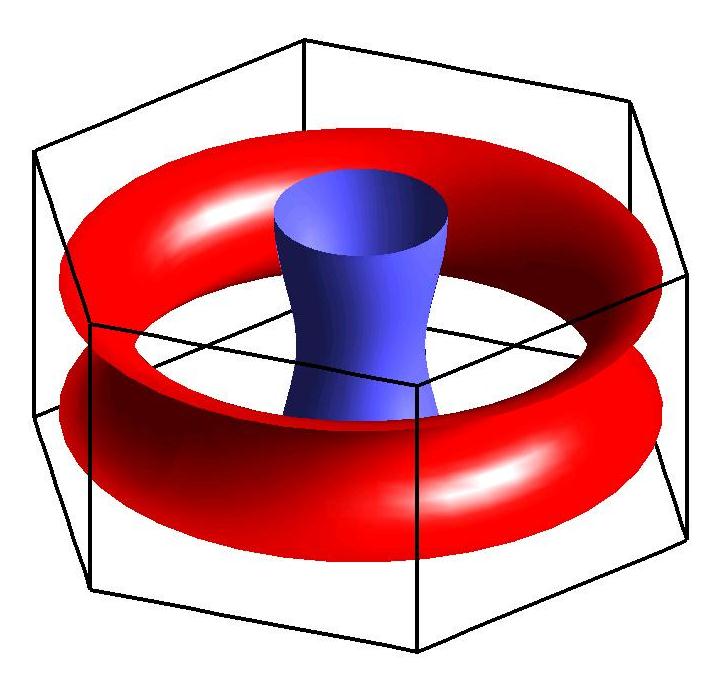


In 2001 superconductivity in the binary compound MgB2 was discovered at a comparatively high transition temperature of about 40 Kelvin. This material possesses a number of properties, which makes it promising for superconducting applications: it can be produced much easier than the high-Tc cuprates, it is cheap and it can be brought onto cheap substrates in high quality. MgB2 also shows a very clear two-gap superconductivity, which means that two superconducting gaps of different size reside on different disconnected parts of its Fermi surface. We have studied various consequences of this two-gap superconductivity on the properties of this material. Using a realistic modelling of the Fermi surface (see picture) we managed to explain the unusually strong temperature dependence of the anisotropy of the upper critical field in this material [4,1]. The temperature dependence of the microwave conductivity shows an unusual coherence peak, that can also be explained by the presence of two distinctly different gaps [3,1]. The nonlinear microwave response of this material was also studied [2].